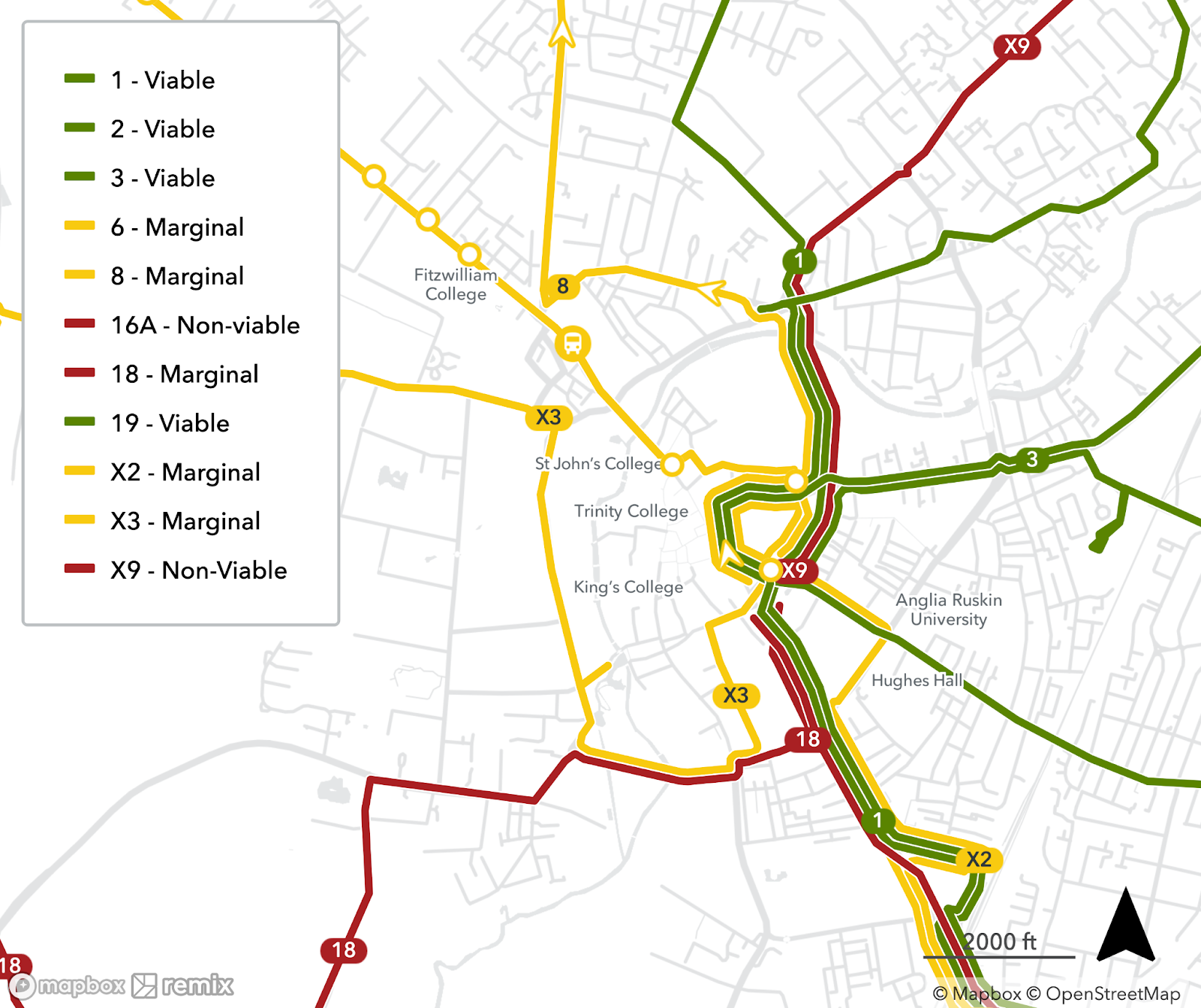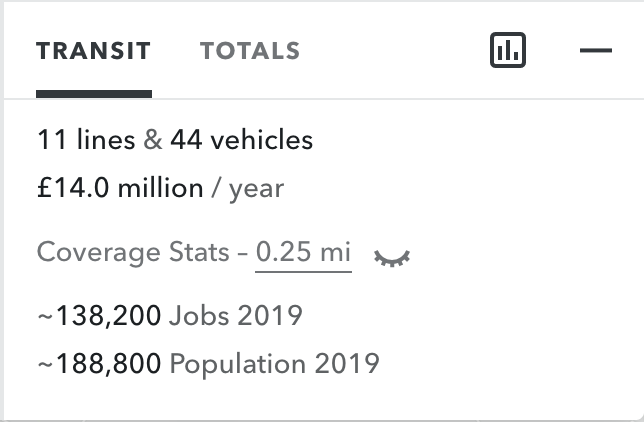Across England, local transport authorities (LTAs) and bus companies are hard at work preparing bus network reviews that will chart the course to a post-pandemic future. With Bus Recovery Grant (BRG) funding due to run out in October 2022, the task at hand is a collaborative one in the model of the Enhanced Partnerships outlined in many BSIPs: work with local commercial operators, to assess which non-subsidised routes are likely to survive when funded solely by farebox revenue. LTAs are asked to deliver reviews that outline “sustainable” long-term networks — which, if patronage is expected to recover at its current slow rate, may necessitate changes or cuts to commercial services previously propped up by the BRG.
Looking forward, while the DfT has given LTAs a fixed project to complete network reviews, the reality is that this will now be an ongoing task. The transport landscape has changed dramatically, first by patronage declines brought about by COVID restrictions, and then by travel pattern changes brought about by hybrid and remote work. The industry will likely remain unsettled and the lofty ambitions of the National Bus Strategy will clash with the financial realities of post-pandemic recovery. LTAs will need to lean into their Enhanced Partnerships and continually review networks together with commercial operators to figure out how to continue to deliver valuable services.
How are LTAs approaching these kinds of tasks? LTAs understand their communities, and how potential route cuts or adjustments may affect mobility in their regions. But working quickly to process patronage data from multiple operators, test multiple proposed network changes, and quantify the impact of each change — this can be overwhelming even for the most well-staffed authority.
At Via, we have been working with our UK partners to offer tools and strategies to speed up this process and help arrive at solutions that preserve the goals of the National Bus Strategy as best as possible. Remix, our transport planning software, has proved valuable to our partners both for analysing and categorising routes, and assessing the potential impact of route changes on job access and other key metrics. Partners can also directly collaborate with operators within the software suite, trading comments and making changes, and easily export the final maps as graphics to support their network reviews. Partners can undertake a process much like the following:
- First, visualise their entire network and toggle routes on or off as needed:
 Screenshot is for illustrative purposes only
Screenshot is for illustrative purposes only
- Next, layer in patronage data and categorise routes as commercially viable, marginal viable, or non-viable:
 Screenshot is for illustrative purposes only
Screenshot is for illustrative purposes only
- Once routes are categorised and the LTA is considering service adjustments, Remix offers live analysis of a route’s cost compared with its impact in terms of population served and jobs accessible in the catchment area:

- As lines are adjusted or removed, or vehicles taken out of service, the route’s cost and frequency will adjust accordingly — as will its coverage in terms of jobs and population.
Using Remix, LTAs can make quick, easy comparisons to analyse the cost-savings of any particular move against the impact it will have on the local community, and prioritise routes for reduction or preservation accordingly. The authority can even draw new fixed routes and see the cost and impact assessments, or test out the viability of microtransit zones to replace any of the routes deemed “non-viable.”
The DfT has asked a lot of LTAs over the last twelve months: the BSIP process was challenging — and ultimately disappointing for the many authorities left out of the awards — and this network review comes hot on its heels. LTAs are being asked to take a much more hands-on approach to transport networks in their areas — and this new role is likely to continue even if the transport industry eventually settles into a new steady state. Having the right tools in place will be essential as LTAs guide transport policy and design well into the future.
Please reach out to partnerships@ridewithvia.com if you’d like to see your network in Remix, and our team will show you how it works.




